Sheffield
Explore hidden histories, historic photos, and things you never knew about Sheffield from the collections and archives of Historic England.
Discover your local listed buildings and places
Introducing some of Sheffield's most historic sites, included in the National Heritage List for England. Some of these captions have been summarised by AI. Click through for the official List entry. Skip this section and go to place by numbers
Sheffield Station and attached Bridges and Platform Bridges
Sheffield
A major early C20 railway station, incorporating sections of the earlier late-C19 station which had marked the completion of a new direct line from Sheffield to London via Chesterfield in...
Redmires First World War Training Area
Sheffield
First World War Training Area provided for the use of the Sheffield City Battalion, comprising numerous in-filled trench complexes and fieldworks dug late- 1914–16.
City Road Cemetery, Sheffield
Sheffield
A public cemetery opened in 1881 by the Sheffield Township Burial Board, designed by the Sheffield architectural practice of Messrs M E Hadfield and Son.
Norfolk Heritage Park
Sheffield
A public park in the centre of Sheffield, laid out as such by the Dukes of Norfolk in the early 1840s.
Castle House (Co-op Store)
Sheffield
Co-operative department store. 1964 by George S Hay, Chief Architect for CWS, with interior design by Stanley Layland, interior designer for CWS.
Former Cole Brothers' Department Store
Sheffield
Department store, 1963 to 1964 to designs of 1961 by Yorke, Rosenberg and Mardall (YRM).
Bailey Hill motte and bailey castle, High Bradfield
Bradfield
Bailey Hill motte and bailey castle, surviving from the 12th century, offers insights into Norman Britain's medieval fortifications and strategic settlement patterns.
Beauchief Hall
Sheffield
Beauchief Hall, built by Edward Pegge in 1661, showcases elaborate formal gardens and historic architecture.
Wincobank slight univallate hillfort and World War II ant…
Sheffield
Wincobank hillfort is a well-preserved slight univallate hillfort, notable for its intact rampart and World War II reuse as an anti-aircraft gun emplacement.
Cup and ring marked rock 740m east of Park Head House
Sheffield
The prehistoric rock art east of Park Head House is unique, featuring rare carvings and a distinct raised oval boss, highlighting its historical significance.
Police Box adjacent to Town Hall, Surrey Street, Sheffield
Sheffield
Police Box. 1928. One of a system of 120 police boxes in Sheffield instigated by Chief Constable Percy J Sillitoe. Timber. Square in plan.
Monument Grounds, Sheffield
Sheffield
Monument Grounds in Sheffield features the 1832 cholera burial site, the 1834-5 Cholera Monument by M E Hadfield, and 19th-century pleasure grounds donated to the city in 1930.
Cholera Monument
Sheffield
Monument, 1835 by Matthew Ellison Hadfield to commemorate those who died in Sheffield in the Asiatic cholera epidemic of 1832.
Unsliven Bridge, Stocksbridge
Stocksbridge
Single-span road-bridge, built about 1730 and widened twice, the last occasion in 1796.
Sheffield General Cemetery
Sheffield
Cemetery of 1836 designed by Sheffield architect Samuel Worth (fl.1830) with a chapel, catacombs and a cemetery office, and a layout which makes dramatic use of a quarried hillside site.
Oughtibridge Hall and Outbuilding
Bradfield
Farmhouse and outbuilding. An open hall and east cross wing of probable medieval origins (C15), a late C16 west cross wing (around 1581).
Sheffield Botanical Gardens
Sheffield
The Sheffield Botanical Gardens, established in 1834 by Robert Marnock, feature Victorian conservatories and diverse plant collections managed by Sheffield City Council since 1957.
Weston Park
Sheffield
Weston Park, opened in 1875, originated from Weston Hall grounds, redesigned by Robert Marnock. It features a museum, art gallery, and various historical monuments.
Wayside cross on Bradfield Moor known as New Cross
Bradfield
Wayside crosses served as religious symbols and waymarkers from the 9th to 15th centuries, with New Cross displaying a unique, preserved socle in its original location.
Porter Valley Parks
Sheffield
Porter Valley Parks is a series of parks and green spaces in Sheffield, created between 1885 and 1938 along the Porter Brook, incorporating Endcliffe Wood and Forge Dam.
Monument to Thomas Boulsover on north side of Wire Mill Dam
Sheffield
Monument of 1929, designed by J R Wigfull for David Flather, Master Cutler 1926-1927. Classical style.
Abbeydale Picture House
Sheffield
Cinema, 1920 with late C20 alterations, by Dixon and Stienlet of North Shields, steel frame clad in white faience tiles to principal north-west and north-east elevations and brick to rear...
The Bar Dyke linear earthwork
Bradfield
The Bar Dyke is a significant earthwork, likely from the Iron Age or post-Roman period, serving as a defensive structure or boundary in southern Yorkshire.
Round cairn 200m west of Margery Hill triangulation pillar
Bradfield
The round cairn near Margery Hill is a well-preserved Bronze Age burial site, unexcavated and located in Derbyshire's gritstone uplands, offering valuable archaeological insights.
Provincial House (former St Vincent's Presbytery)
Sheffield
Former presbytery and oratory chapel, now offices. 1878 by M E Hadfield & Son for the Vincentians. Brick with brick and stone dressings, red Hollington stone porch, tiled roofs.
Cottage, barn, coach house and stables, Norwood Grange
Sheffield
Cottage, barn, stables and coach house. Mid C19 for Norwood Grange, a suburban villa of the same date. Sandstone with slate roofs.
York and Lancaster Regiment War Memorial
Sheffield
Regimental war memorial. 1923 to designs by Roy Smith, sculptors G N Morewood, Roy Smith and Francis Jahn; cast by Parlanti's bronze foundry. Granite ashlar and bronze figures.
Burngreave Cemetery
Sheffield
Opened in 1860, Burngreave Cemetery was one of the first public cemeteries to be established in Sheffield.
Two ring cairns at Ciceley Low, 500m ESE of Parson House …
PEAK DISTRICT
The East Moors in Derbyshire contain significant Bronze Age archaeological remains, including ring cairns used for burial and rituals, highlighting early human activity beyond the moors.
Handlands Romano-British settlement, 460m south west of W…
Ecclesfield
The Handlands Romano-British settlement exemplifies rare gritstone fringe sites, preserving cultivation and settlement features.
Former cruck barn attached to the south of 35 St Mary's L…
Ecclesfield
A cruck-framed, stone-built former barn of pre-1700 date with possible medieval origins, and with later alterations.
30, Mowbray Street
Sheffield
Workers' housing. 1850s. Handmade bricks, stone plinth and dressings, slate roof.
Sheffield War Memorial, 25m to the south of City Hall
Sheffield
First World War memorial dedicated in 1925, with dates added for both World Wars. It is the only war memorial by its sculptor, George Alexander, and of the architect Charles Carus-Wilson.
Wayside and boundary cross on the south side of Elliott Lane
Ecclesfield
The wayside cross on Elliott Lane is a medieval structure that may have marked a boundary. It features an incised Latin cross and inscriptions possibly added in the 19th century.
Romano-British field system and settlement at Wheata Wood
Ecclesfield
The Romano-British settlement at Wheata Wood showcases distinct field systems and enclosures typical of the Roman period in Northumberland and Cumbria, highlighting regional agricultural...
Explore more
Search for more listed placesSheffield through time
This timeline shows the first period of use for buildings and places on the National Heritage List for England, just one of the details recorded for every list entry. Click around to see how Sheffield changes over time. Skip this section and go to aerial photos
Prehistoric Before AD 43
Prehistory covers a million years of human occupation before the Roman invasion, from hunter-gatherers of several human species, including Neanderthals, to more recent herders and farmers. It was a time of developing technologies and belief systems, involving contact with and migration from Europe, all reflected in the variety of artefact and monument types characteristic of particular prehistoric periods.
Roman AD 43 to AD 410
Britain was invaded by four legions of the Roman army in AD 43, who relatively rapidly conquered England from landing points in Kent. Parts of Wales and Scotland soon followed.
Roman culture brought urbanism, monumental buildings, wide-ranging religious beliefs, writing, and strong social hierarchy. The Roman administrative system was withdrawn in AD 410.
Early medieval AD 410 to AD 1066
This period, often associated in England with Anglo-Saxons and Vikings, saw a reduction in urban living from the Roman period and increased migration from northern Europe.
Traces of this period can be found in cemeteries, particularly in artefacts and in some of the very early churches, as this period also saw the growth of Christianity in Britain.
We don't have an image for any of these list entries yet
Medieval AD 1066 to AD 1540
This period, sometimes known as the Middle Ages, began with the Norman invasion in AD 1066. It saw a significant rise in military and defensive buildings such as castles and earthworks, as well as religious houses dominating a largely agricultural landscape.
The monarchy and Church dominated the period, which also saw the break with the Roman Catholic Church and the English reformation.
Post medieval AD 1540 to AD 1901
The Post-Medieval period brought seismic changes to life in England, with religious reformation leading to the democratization of worship and the destruction of hundreds of religious houses.
In parallel, there was a huge expansion of scientific study and enlightenment that permanently altered the nation's social structure and landscape. Industrialization and mass production lead to wider global trade, emigration, and immigration.
20th century AD 1901 to AD 2000
The 20th century saw an incredible expansion of England's transport networks, with suburban growth shadowing rapid infrastructural expansion. The establishment of state schools, hospitals, and modern technical colleges, with new architectural styles, radically changed the appearance of towns and cities.
Two catastrophic world wars and the 1918 pandemic also brought unprecedented change, altering England's built environment and social structures forever.
Prehistoric Before AD 43
Prehistory covers a million years of human occupation before the Roman invasion, from hunter-gatherers of several human species, including Neanderthals, to more recent herders and farmers. It was a time of developing technologies and belief systems, involving contact with and migration from Europe, all reflected in the variety of artefact and monument types characteristic of particular prehistoric periods.
Roman AD 43 to AD 410
Britain was invaded by four legions of the Roman army in AD 43, who relatively rapidly conquered England from landing points in Kent. Parts of Wales and Scotland soon followed.
Roman culture brought urbanism, monumental buildings, wide-ranging religious beliefs, writing, and strong social hierarchy. The Roman administrative system was withdrawn in AD 410.
Early medieval AD 410 to AD 1066
This period, often associated in England with Anglo-Saxons and Vikings, saw a reduction in urban living from the Roman period and increased migration from northern Europe.
Traces of this period can be found in cemeteries, particularly in artefacts and in some of the very early churches, as this period also saw the growth of Christianity in Britain.
We don't have an image for any of these list entries yet
Medieval AD 1066 to AD 1540
This period, sometimes known as the Middle Ages, began with the Norman invasion in AD 1066. It saw a significant rise in military and defensive buildings such as castles and earthworks, as well as religious houses dominating a largely agricultural landscape.
The monarchy and Church dominated the period, which also saw the break with the Roman Catholic Church and the English reformation.
Post medieval AD 1540 to AD 1901
The Post-Medieval period brought seismic changes to life in England, with religious reformation leading to the democratization of worship and the destruction of hundreds of religious houses.
In parallel, there was a huge expansion of scientific study and enlightenment that permanently altered the nation's social structure and landscape. Industrialization and mass production lead to wider global trade, emigration, and immigration.
20th century AD 1901 to AD 2000
The 20th century saw an incredible expansion of England's transport networks, with suburban growth shadowing rapid infrastructural expansion. The establishment of state schools, hospitals, and modern technical colleges, with new architectural styles, radically changed the appearance of towns and cities.
Two catastrophic world wars and the 1918 pandemic also brought unprecedented change, altering England's built environment and social structures forever.
Aerial photos of Sheffield
Aerial photography helps reveal secrets of England's changing landscapes that are impossible to see from the ground. Skip this section and go to archive images
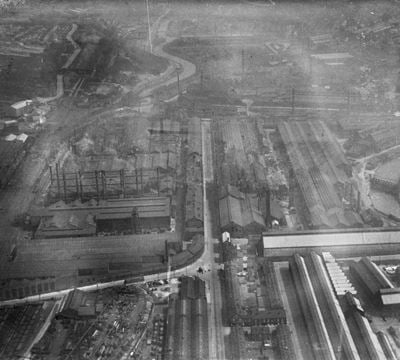
Sheffield
The Vickers Works and environs, Sheffield, 1922

Brightside
The English Steel Corporation Ltd River Don Works and environs, Brightside, 1949

Sheffield
The W. A. Tyzack & Co Ltd Horseman Works, Kelham Island and environs, Sheffield, 1951

Sheffield
East Range Cornish Plate Works, Cornish Street and the surrounding area, Sheffield, 1961
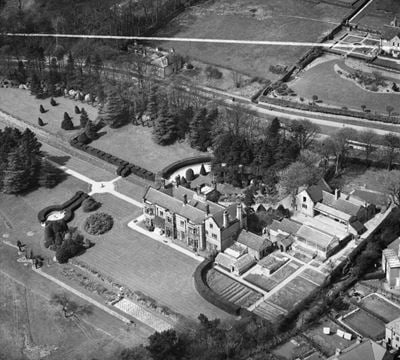
Whirlow
Whirlow Court, Whirlow, 1952

Whirlow
Whirlow Court and garden, Whirlow, 1952

Sheffield
The Brightside Works and environs, Sheffield, 1922

Sheffield
The Brightside Works and environs, Sheffield, 1953

Sheffield
Haymarket, the site of Sheffield Castle and the Norfolk Market Hall, Sheffield, 1921
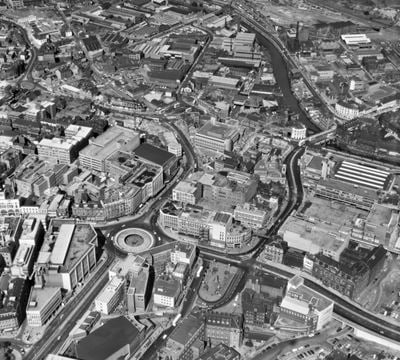
Sheffield
Angel Street and environs, Sheffield, 1974
Sheffield in the Historic England Archive
The Historic England Archive cares for over 15 million images, dating from the 1850s to the present day. Discover stunning images of Sheffield's past. Skip this section and go to stories about heritage
John Laing Collection
Sheffield
Date created: 16 Jul 1984
A view of the checkouts at the Sainsbury's supermarket in Sheffield
London, Midland and Scottish Railway Company
Upper Derwent Valley, High Peak, Derbyshire
Date created: 1912 - 1914
A photograph of a postcard showing a view looking north along the Upper Derwent Valley during the construction of the Derwent Reservoir.
Nigel Temple Collection of Postcards of Parks and Gardens
Endcliffe, Sheffield, Sheffield
Date created: 1901 - 1906
GENERAL VIEW
John Laing Collection
Sheffield
Date created: 16 Jul 1984
The Sainsbury's supermarket in Sheffield, showing the carpark entrance
London, Midland and Scottish Railway Company
Sheffield
Date created: 10 Nov 1927
Men stacking boxes of biscuits in the depot of the Associated Biscuit Manufacturers Ltd, at Sheffield City Goods Station
Nigel Temple Collection of Postcards of Parks and Gardens
Endcliffe, Sheffield, Sheffield
Date created: 1900 - 1905
GENERAL VIEW SHOWING THE STEPPING STONES
London, Midland and Scottish Railway Company
Sheffield
Date created: 10 Nov 1927
Bags and boxes of merchandise stored in George Bassett and Company's first floor depot at Sheffield City Goods Station
Nigel Temple Collection of Postcards of Parks and Gardens
Endcliffe, Sheffield, Sheffield
Date created: 1900 - 1920
GENERAL VIEW BESIDE THE LAKE
London, Midland and Scottish Railway Company
Sheffield
Date created: 10 Nov 1927
Rods and rings of steel wire on the floor in the McCall's depot at Nunnery Goods Station
Nigel Temple Collection of Postcards of Parks and Gardens
Endcliffe, Sheffield, Sheffield
Date created: 1914 - 1919
GENERAL VIEW SHOWING THE STEPPING STONES
London, Midland and Scottish Railway Company
Hathersage Moor, Sheffield
Date created: 08 Aug 1928
A road crossing Hathersage Moor
Nigel Temple Collection of Postcards of Parks and Gardens
Endcliffe, Sheffield, Sheffield
Date created: 01 Jan 1899 - 31 Dec 1904
VIEW LOOKING ALONG THE STREAM
Stories about heritage in your local area
Historic England publishes news, blogs, research, videos, and podcasts celebrating England's rich heritage. Discover the stories we have about Sheffield. Skip this section and go to education
8 Sites of Scientific Discovery and Innovation
Mentions Brown-firth Laboratories, Now English Pewter Company
From Charles Darwin to Alan Turing, discover incredible places in England connected to scientific achievement.
A Brief History of Reinforced Concrete Buildings
Mentions Park Hill
Reinforcing concrete made highly complex large-scale structures possible.
The Beautiful North
Mentions The Crucible Theatre
In April 2016, towns and cities across the North East, North West and Yorkshire were invited to bid to put on a ‘Great Exhibition of the North’, which...
9 Reasons to Look Up in Yorkshire
Mentions Town Hall
You may think you know a place well, but if you take the opportunity to look up, you may be surprised at what you discover.
Mentions Sheffield
From Sheffield’s Steel to Bradford’s textiles, manufacturing heritage is still a core part of the North’s physical and emotional identity.
Trade of the North | Spirit of the North Ep. 2
From Sheffield’s Steel to Bradford’s textiles, manufacturing heritage is still a core part of the North’s physical and emotional identity. John Kippin explores the places he photographed to reflect the North of England’s trading history.
Mentions Sheffield
This episode sees historians Dr Suzannah Lipscomb, Dan Cruickshank and Emily Gee examine the final locations in the “Loss & Destruction” category, as...
Tragedy and the fight for justice
This episode sees historians Dr Suzannah Lipscomb, Dan Cruickshank and Emily Gee examine the final locations in the “Loss & Destruction” category, as chosen by Mary Beard from public nominations. Find out about the shipwrecked SS Mendi, the burst dam that devastated Sheffield and the fight for justice after the Hillsborough disaster. A History of England in 100 Places is a Historic England podcast, sponsored by specialist insurer Ecclesiastical ecclesiastical.com
Mentions Sheffield
Join Emma Barnett, Historic England’s Deborah Lamb and De Montfort University's Professor Martin Polley as we delve into England’s top ten Sports and...
The birthplace of the Paralympics and post-war theatre
Join Emma Barnett, Historic England’s Deborah Lamb and De Montfort University's Professor Martin Polley as we delve into England’s top ten Sports and Leisure locations, as selected by Baroness Tanni Grey-Thompson, including the pioneering work of Stoke Mandeville and Sheffield’s unique theatre complex.. Nominate a place at HistoricEngland.org.uk/100Places | A History of England in 100 Places is a Historic England podcast, sponsored by specialist insurer Ecclesiastical ecclesiastical.com
Mentions Sheffield
Gwenda’s Garage was founded in 1985 in Sheffield, South Yorkshire, by three women mechanics: Ros Wollen (aka Roz), Annette Williams, and Ros Wall.
Sheffield’s Trailblazing Women Mechanics: The Legacy of Gwenda’s Garage
Gwenda’s Garage was founded in 1985 in Sheffield, South Yorkshire, by three women mechanics: Ros Wollen (aka Roz), Annette Williams, and Ros Wall.
Mentions Sheffield
What does the future of the high street look like? Filmed in Sheffield, this short film explores the high street as a character seen through young...
The Penalty of Our Paradox: A Poem for Sheffield
What does the future of the high street look like? Filmed in Sheffield, this short film explores the high street as a character seen through young people’s experiences of public spaces.
Mentions Sheffield
20 ago, we published our first ever Register of Buildings at Risk across England.
20 Years of Saving Heritage at Risk
20 ago, we published our first ever Register of Buildings at Risk across England. It featured 1,930 buildings and structural scheduled monuments that were neglected, broken and unloved.
Mentions Sheffield
41 places across England that were at the centre of suffragette action, from mass meetings and smashed windows to prison hunger strikes and post box...
Sites of Suffragette Protest and Sabotage
41 places across England that were at the centre of suffragette action, from mass meetings and smashed windows to prison hunger strikes and post box fires, have been officially recognised.
Historic England's Science Facility Reopens After Major Refit
Mentions Sheffield
Historic England’s flagship science facility at Fort Cumberland in Portsmouth reopens after year-long refit, marking 75 years of specialist work.
Heritage and Social Prescribing in Action
Mentions Sheffield
Research article sharing good practice on social prescribing delivery in community heritage projects.
Rooswijk Shipwreck Excavation The Post Excavation Phase
Mentions Sheffield
Find out how a team of specialists is researching and conserving the artefacts from the 18th-century shipwreck of the Rooswijk.
The London Wreck: A Kaleidoscope of Specialists, Materials and Artefacts
Mentions Sheffield
Scientific analysis of the finds from the wreck of the London has revealed a wealth of information about life aboard a 17th century Royal Navy Vessel.
England's Suburbs 1820-2020
Mentions Sheffield
Historic England’s major national research project on the heritage of suburbs reaches its conclusion.
Lost and Found: Treasures in the Archive
Mentions Sheffield
This COVID-19 inspired project showcases the potential of online heritage engagement to improve individual wellbeing for diverse audiences.
Historic England Grants £65,000 to Sheffield City Council to Protect City’s Special Heritage
Mentions Sheffield
Historic England has awarded £65,000 to Sheffield City Council to develop a series of plans aimed at preserving the city’s unique heritage.
New Funding to Celebrate Rural and Coastal Working-Class Heritage
Mentions Sheffield
Historic England is funding new projects to explore untold stories and celebrate the people and places at the heart of our history.
Rare First World War Practice Trenches in Gosport Scheduled
Mentions Redmires First World War Training Area, Sheffield
The well-preserved site at Browndown, Gosport in Hampshire has been designated as a scheduled monument.
Discovery Is Only The Beginning
Mentions Sheffield
Examining how the application of multiple scientific analyses enhances our understanding of historic shipwrecks.
Creating Access to Reference Collections
Mentions Sheffield
Work on a resource to provide a key identification aid for distinguishing between the different animal species found on archaeological sites.
The Origins and Use of Medieval Glazing in England
Mentions Sheffield
Researching window glass from England’s medieval abbeys.
Sheffield's social history through photos
Over 10,000 images from the Historic England Archive have been specially selected and re-captioned for teachers, students, and anyone who wants to learn more about their local area. Skip this section and go to grant-aided places
Ye Old Carbrook Hotel, Attercliffe Common, Sheffield, South Yorkshire
Period: Stuart (1603 - 1713)
This building was originally constructed in 1620 and has since had alterations.
Ye Old Carbrook Hotel, Attercliffe Common, Sheffield, South Yorkshire
Workshop Ranges, Well Meadow Street, Sheffield, South Yorkshire
Period: Victorian (1837 - 1901)
These workshops and attached houses were constructed in 1860.
Workshop Ranges, Well Meadow Street, Sheffield, South Yorkshire
Workshop Ranges and Crucible Furnace, Sheffield, South Yorkshire
Period: Victorian (1837 - 1901)
These workshops, furnace and houses were constructed in c1840.
Workshop Ranges and Crucible Furnace, Sheffield, South Yorkshire
Workers housing, Bradfield, South Yorkshire
Period: Georgian (1714 - 1836)
This terrace of houses known as Riverside Cottages, was built in the 18th century. It was altered in the mid-to-late 19th century.
Workers housing, Bradfield, South Yorkshire
Wharncliffe Lodge, Stocksbridge, Sheffield, South Yorkshire
Period: Georgian (1714 - 1836)
This lodge was largely built in the 18th century. It is built on the site of an earlier house from 1510.
Wharncliffe Lodge, Stocksbridge, Sheffield, South Yorkshire
Westbrook House, Sheffield, South Yorkshire
Period: Georgian (1714 - 1836)
Westbrook House was built in 1794-5. It is now used by the Sheffield Area Health Authority as offices.
Westbrook House, Sheffield, South Yorkshire
West Bar Fire Station Museum, Sheffield, Yorkshire
Period: Victorian (1837 - 1901)
In 1866 the Police Fire Brigade was created. This Police, fire and ambulance station, built 1897-1900 is now a fire museum
Truro Works, Sheffield, South Yorkshire
Period: Georgian (1714 - 1836)
These Industrial workshops were built between 1830 and 1850. They have had 19th and 20th century additions and alterations.
Truro Works, Sheffield, South Yorkshire
Visit grant-aided places near you
These places and buildings have been helped by Historic England's financial grants. Find local heritage in your neighbourhood that you never knew existed! Please note that opening times may vary. Skip this section and go to related locations
Green Lane Works Archway, Green Lane, Sheffield, South Yorkshire
Green Lane Works Archway boasts a 1860 works entrance, built for Henry Hoole and restored in 1985.
Park Hill Flats, Talbot Street, Sheffield, South Yorkshire
Park Hill, built between 1957-60 in Sheffield, is a landmark public housing development designed by Jack Lynn and Ivor Smith.
Discover more
Ready for more local stories? Take a look at these other places nearby

Barnsley
Local Authority District
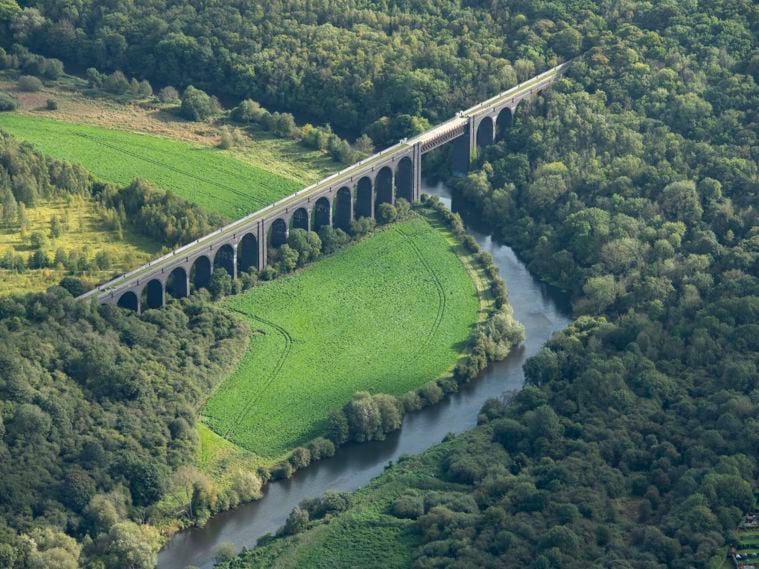
South Yorkshire
Ceremonial County
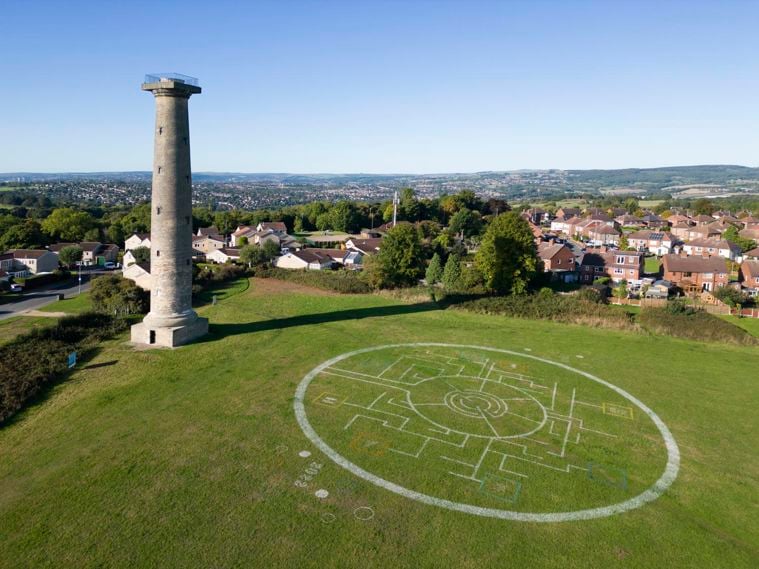
Rotherham
Local Authority District